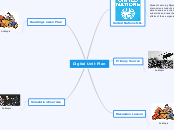realizată de Matt LeGrand 10 ani în urmă
408
EDSC 442 Digital Unit Plan

realizată de Matt LeGrand 10 ani în urmă
408

Mai multe ca acesta
Summative – After negotiations and the following class discussion students will write a short letter to a world leader not present at Yalta and detail challenges they faced during negotiations at Yalta, as well as specific goals they achieved and failed to achieve during negotiations. They will also imagine and write how things could have ended differently if the leader they are writing to was present during the negotiations at Yalta.
At the end of the negotiations students will calculate their point total and share with the other diplomats in their group.
After ranking their goals, students will reconvene as a group of 6 and negotiate for 25 minutes the various issues each nation brings to Yalta. Each nation’s goals are listed on handout two, and students/diplomats are responsible for stating specific reasoning for advancing their nations’ priorities.
Students will understand their main goal is to negotiate, for their nation, as many of the listed goals that each nation arrived at Yalta desiring.
Formative – Prior to beginning any negotiations students will respond to a journal question asking, “Is it better to approach negotiations desiring what is best for your own nation, or what is better for the whole world?” Students will hypothesize, before negotiating, why nations should or should not approach Yalta with a specific agenda. This journal will be collected a reviewed while students are engaging in negotiations.
walking around the room providing clarification and listening to the debates between groups. While walking around the class the teacher will be providing direct instruction to students who need additional help with verbalizing their negotiations.
Teacher will ask students to respond to a journal question: "Is it better to approach negotiations desiring what is best for your own nation, or what is better for the whole world?”
The teacher will explain to students that they are going to be diplomats at Yalta and it is their responsibility to negotiate terms that are beneficial to their particular nation, at the expense of other nations.
Summative Assessment: Students will engage in a QuickWrite activity that has them summarize new knowledge of the Cold War into about five or six sentences. In this summary students will define and integrate the lesson’s three new vocabulary words.
Students will complete the writing sections in their foldable as well as draw simple illustrations with pen or pencil in the appropriate sections.
Students will be given a piece of paper for the foldable prior to reading which already has predetermined segments for each writing section. This foldable was chosen because it’s five distinct sections for writing align with the jig-saw reading method of breaking the reading down into five different sections.
Students will analyze the political cartoon and respond to the corresponding questions and share their responses with a partner.
Formative Assessment: When students analyze the political cartoon I will be assessing their prior understanding of the origins of the Cold War by reading their responses to the image analysis questions.
Teacher will ask students if they, right now, fear communism and why or why not it is something they are weary of.
Teacher will explain that what I want is for students to be able to understand and analyze how America became involved in the Cold War.
Teacher will show a political cartoon accompanied by a list of questions analyzing the image.
Summative: Formal – I will collect the written answers to the document analysis questions. Summative: Informal – I will collect the questionnaires to estimate how many students chose a particular nation for the article.
Teacher will explain to students how to complete the mock newspaper article using evidence from the primary source documents.
The teacher will instruct students how to use the primary source documents to answer the written questions.
Formative: Informal checking of timeline activity completion following “hook”
Students will participate in a jigsaw type discussion where they will act as an "expert" for their source. When other students are reporting on their source, students will be listening, asking clarifying questions, and answering written questions.
Students will use primary source documents to analyze whether the U.S. or Soviet Union is most responsible for the Cold War.
Summative: Students will engage in a QuickWrite activity to complete the lesson. Students will turn in their writing as an exit card for leaving class and they will serve as an assessment for the teacher in seeing where to pick up the following lesson.
The teacher will pose a critical thinking question to guide the lesson: Why did the U.S. intervene in Vietnam?
The teacher will instruct students the proper methods for analyzing primary sources and show how to input in the analysis worksheets.
Formative: Prior to the analyzing sources I will monitor student questioning and assess their prior knowledge levels regarding the Vietnam War. As students converse about the timeline I will be listening for questions and misconceptions. When students are working collaboratively to complete the analysis organizers I will be walking around assessing their progress and answering any questions.
Students will analyze the sources and input their thoughts and findings into the analysis organizer worksheets.
Students will use the primary sources including a photograph, a letter from JFK to Ngo Diem, and a Bob Dylan song entitled Masters of War to determine, in their opinion, why the U.S. wanted to involve itself in Vietnam.
Students quickly review verbally what the U.N. is, where it is located, and when it came into being.
Student completes fill-in guided notes with the vocabulary section and critical thinking question writing portions. Students view various primary sources and videos to establish context.
Teacher poses three critical thinking based questions regarding the uses of the U.N. by superpowers and how effective the U.N. was at curbing conflict.
Teacher lectures with guided notes about the U.N.'s actions following WWII and throughout the Cold War.